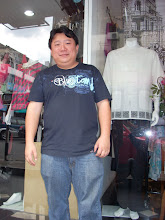



In Sarawak, the dominant tribal groups are the Dayak. Tribal people live in longhouses. There are the Iban (Sea Dayak), and the Bidayuh (Land Dayak). All of Malaysia’s tribal people feel a strong spiritual connection to the rainforest. The Iban grow rice and fruit, and hunt and fish. The longhouse is the very centre of communal life in Sarawak. There are over 4,500 longhouses in Sarawak. These communal houses, built on stilts, may contain up to 100 individual families in separate 'apartments' built under one long roof.
The rainforest is home to 27 ethnic groups each with own distinct language and culture. The real longhouse experience begins with the journey upriver. River travel in a perahu - a shallow draught canoe - affords you the pleasure of seeing Sarawak at its best. Longhouses differ slightly from tribe to tribe but share the same basic characteristic. The Iban are the largest tribe in Sarawak and one of three native peoples whose past includes the practice of headhunting. Heading upstream, your boatman will take you along idyllic waterways with white pebble beaches, under the over-arching branches of tropical hardwoods, whose dense emerald foliage allows through only a dappling of sunlight. As you meander upstream, and your boatman punts through the river's shallows, kingfishers glide past, hornbills fly overhead, and local children dive from the riverbank into the cooling waters. Longhouse inhabitants are very well known for their hospitality. It is normal for people to just turn up and expect to be invited in by the headman (gifts are expected in return). As you arrive at the longhouse, it is customary to be greeted by the longhouse maidens and young men performing traditional dances and playing ceremonial gongs. At the entrance to the longhouse there is a wooden arch with small baskets made of palm leaves hanging from the top. Offerings such as a few coins or a cigarette are occasionally put into the baskets and help keep evil spirits out of the longhouse. From the moment you step inside the longhouse you will be treated as an honoured guest. Visitors will be offered a glass of tuak - the very palatable local rice wine. Or more often than not, several glasses of tuak will be offered to wash down a banquet of local delicacies. Then your hosts will start beating the gongs. This is the cue for the traditional dance, usually the Ngajat. The inspiration for the graceful movements of the dancers comes from the effortless flight of the hornbill, Sarawak's emblem. Then your newfound friends will enthral you with stories of Sarawak's legendary past. Usually a longhouse party lasts all night. As the sun is eclipsed by the moon, weary from your day's travel, and a night of dancing and feasting, retire to the ruai- a covered verandah - for a good night's sleep.In many Iban longhouses you find only old people and young children. I got the feeling that the whole community is reduced to an exhausted past, and an uncertain future. Naturally, without the younger generations to inherit their rich cultural legacies, but traditions are dying. The ancient crafts of making boats, building longhouses, weaving, dancing, tattooing, and native art are now dying fast. Even the whole oral tradition of telling tales and myths is disappearing.


No comments:
Post a Comment